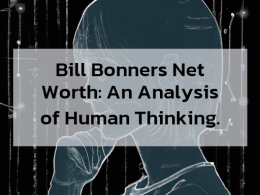If you’re looking for an alternative to traditional financial institutions, you should look into blockchain technology. This new form of electronic payment can be secure and can settle transactions in as little as 10 minutes. Its speed and availability are particularly valuable for cross-border trade. Traditional financial institutions operate during business hours, but blockchain technology works around the clock. This means that transactions can be finished in 10 minutes and are thought to be safe in a few hours.(Also Read: How To Mine Bitcoin: A Beginner’s Guide)
Applications of blockchain technology
Blockchain technology is being used in a variety of industries. For example, it can help streamline government benefits administration. Using blockchain data to ensure that beneficiaries receive their funds is likely to reduce fraud and costs. Additionally, it can make property titles more transparent, making the transfer of property easier. And with no need for duplicate data entry, blockchain data is always secure.

One of the most important applications of blockchain technology is in the healthcare sector. Patients’ private information and health history are often shared in healthcare settings. This information needs to be protected against theft, fraud, and tampering. Blockchain technology can speed up and simplify these processes by getting rid of the need for duplicate data.
Blockchain technology can also be used in loyalty programs. By eliminating the need for a centralized authority, businesses can offer customer rewards in the form of digital currency. This can significantly increase transaction speeds. Furthermore, customers can store their rewards in digital wallets. Because transactions do not require centralized authorities’ approval, they are instantaneous.
Blockchain technology has the potential to make healthcare more efficient. It can help overcome healthcare data silos and enable open health data exchange markets that are driven by patients. These markets won’t be your typical data warehouse. Instead, they will be full of V3 data—validated, verifiable, and valuable—so that patients can make smart decisions about their health.
Blockchain is quickly becoming a widely accepted technology in a variety of industries. It’s widely used in the financial sector, but its applications extend far beyond that. Its immutability and transparency make it applicable across a variety of industries.
Its architecture
Blockchain technology’s architecture is the way it stores, verifies, and shares data. It consists of multiple layers, all of which must work together for security and scalability. As technology grows, it will need more layers to reach the level of security and scalability that people want.
Blockchain technology can be useful in many different applications, including supply chain management, e-commerce, and payment processing. For example, Incent, an incentive program, will generate loyalty tokens for affiliated businesses and store them on a blockchain for instant exchange. This loyalty program is accessible through a browser or mobile phone. Similarly, the World Food Program, which has a mission to fight hunger, has recently launched a project in Pakistan to collect food and money for the people who are in need. The entire process is recorded on the blockchain, so that no one party can cheat the other.
The architecture of blockchain technology differs slightly in each model. The level of decentralization, for example, will determine the type of consensus mechanism. Depending on the level of decentralization, the ledger protocol can be centralized, private, or semi-private. In each case, the bookkeeper must be trustworthy. In addition, the consensus process is done through a consortium, and it is possible for participants to have conflicts of interest.
The consensus layer is the most important layer of a blockchain. This layer is responsible for validating and ordering blocks, ensuring that everyone agrees on a transaction. The application layer is composed of smart contracts, chaincode, and decentralized applications. The application layer is divided into two sublayers: the application layer and the execution layer. These layers work together to ensure the deterministic nature of the blockchain.
Its applications
Blockchain technology enables secure, distributed logging of digital transactions. This new technology is expected to revolutionize computing in several areas. It has the potential to help track the spread of disease, preserve patient information, and accelerate medical trials and donations. This technology is already being used in several applications. In health care, it has the potential to improve the monitoring of the COVID-19 pandemic, which has killed more than 9,000 people.
Blockchain technology can be used to improve the safety of health care by ensuring that patient data is secure. It also helps secure the supply chain by reducing the risk of fake drugs. It can also be used to produce patient records in a large-scale, secure way. This new technology is an important step towards patient-centered health care.
Blockchain technology is also useful for the food industry. There have been countless cases of harmful bacteria and hazardous materials accidentally entering food. It can take days or weeks to identify the source of the outbreaks. With blockchain, brands will be able to track where their products come from all the way from the factory to the customer.
A blockchain is an ordered database that stores blocks of transactions. Each block in the chain is linked to the previous one. The first block is known as the “genesis block,” and each block builds on the previous one. Each block has rules that help ensure its legitimacy. It can also help prevent fraudulent transactions. Blockchain technology can reduce the cost and risks associated with entering into contracts.
Blockchain technology has the potential to change the distribution of content and create new markets. It can also improve the efficiency of logistics systems and improve the reliability of public services. Currently, the financial industry is a pioneer in the use of blockchain technology. It has the potential to revolutionize the entire financial system.
Its security
Blockchain technology’s security is largely due to the way in which it stores information. Instead of one central location where information is stored, it is spread across a network of computers. Each computer updates the chain with new blocks, which makes it difficult for cyber attackers to manipulate the data. In addition, each block contains a unique hash code, which means that if one block is altered, they must update every previous block as well.
While blockchain technology has many advantages, it also attracts a large number of cybercriminals who target organizations with cyberattacks. This has prompted many organizations to integrate blockchain security into their processes to protect themselves from attacks. Blockchain security can help organizations avoid cyberattacks by making sure that secure coding and penetration testing are done the right way.
Blockchain technology’s security is an important issue for financial institutions. While companies tend to be slow to adopt new technologies, Wall Street is taking notice of the security and privacy protocols of blockchain. Large institutions such as Bank of America and JP Morgan are exploring blockchain as a possible solution to their cybersecurity concerns. But before deciding to make the leap into blockchain technology, companies need to know more about its security and privacy benefits.
Blockchains also enable smart contracts, which ensure that all transactions are valid. This technology also makes it possible for organizations to develop secure networks with multiple nodes. This helps companies keep their edge in their competitive landscape without relying on a third party. This new technology has a number of uses and will challenge traditional approaches to data management.
Blockchain technology is being implemented in several different types of transactional environments, including the military. Unfortunately, this has created a number of security risks. Most blockchain transactions have endpoints that are not as secure as actual blockchain blocks. In a Bitcoin trading transaction, for example, money may be put into a “hot wallet,” which is a virtual savings account that is not as hard to hack as real blockchain blocks.
It has the potential to reduce transaction costs.
Blockchain is a promising new technology that can drastically reduce the costs of conducting business. It is already changing the organizational structures of many industries and will continue to do so as it reduces the need for intermediaries. It is not clear, however, how this new technology will affect the cost of transactions.
As more companies and organizations look to use this new technology for financial services, many of them are exploring the benefits that it can bring. Financial firms can use it to automate processes such as regulatory reporting and audit documents, while allowing employees to focus on value-added activities. In addition, blockchain can improve research and clinical trials, which often involve multiple sites and sensitive data management. It can connect different kinds of data in a study, so there’s no need to match up data from different databases.
Another application of blockchain is in airline loyalty programs. For example, the Singapore Airlines Kris+ lifestyle app has a blockchain-based digital wallet, which allows frequent fliers to redeem their miles for cryptocurrency, which they can use to make purchases. Blockchain also has the potential to help solve the challenges involved in aircraft MRO. One estimate predicts that blockchain could cut costs by $3.5 billion for this industry.
Another area in which blockchain can be used to automate transactions is in the oil and gas industry. It can streamline contract validation and reduce transaction costs. Several oil and gas companies are already exploring this technology. In Brazil, Alibaba filed a patent for a blockchain-based transaction system.
Blockchain-based systems can also help improve efficiency and revenue streams for farmers. Incentives in the CO2 Offset Market, for example, encourage farmers to plant hemp, a carbon-negative crop. Farmers can then tokenize their hemp crops to sell carbon credits. Blockchain technology can also help improve food safety and traceability and improve animal husbandry.
Visa has partnered with transaction management startup DocuSign to use blockchain to automate car leasing. With blockchain, prospective customers can select a car, sign a lease agreement, and obtain an insurance policy. Once the paperwork is completed, the blockchain is updated with their signatures.(Also Read: How to Start Trading Cryptocurrencies)












